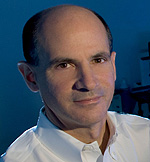‘The Molecular Regulation of Stem Cell Quiescence’ Webinar
Dr. Rando participated in a webinar hosted by the journal ‘Current Opinion in Cell Biology’, and sponsored by Beckman Coulter. A recording is available on demand at the link to the left.
Abstract:
Many adult stem cells reside in the quiescent state, or the G0 state of the cell cycle, for prolonged periods of time. This state, one reversible cell cycle withdrawal, has long been viewed as a dormant state with minimal basal activity. However, increasingly there is evidence that suggests that quiescent cells have specific transcriptional, post-transcriptional and metabolic programs that serve at least two functions. The first is to actively maintain the quiescent state, indicating that this is not simply a state of dormancy but in fact under active regulation. The second is to prime the cells for activation, a process that is characterized by the upregulation of multiple cellular processes necessary for cells to enter the cell cycle and begin the process of differentiation.
Skeletal muscle stem cells, or satellite cells, have proven to be extremely valuable in the study of stem cell quiescence because they persist in the quiescent state for weeks, months, and at least in long-lived mammals, perhaps years. In addition, they can be readily identified in situ, they can be rapidly purified by FACS at very high yield and very high purity, and the states of quiescence, activation and “re-quiescence” (i.e. the process by which a proliferating cell returns to quiescence in the process of stem cell self-renewal) can be modeled and studied in vitro. We have focused our studies of stem cell quiescence on this population, and we have discovered unexpected levels of regulation of quiescence and activation. These include the maintenance of the quiescent state by quiescence-specific miRNAs and by active signaling via the Notch pathway. Recent epigenetic profiling using ChIP-seq analysis has revealed evidence of dynamic regulation of chromatin in quiescent stem cells and intriguing epigenetic changes that occur during chronological stem cell aging. Finally, recent results from our laboratory have revealed an unexpected ability of quiescent stem cells to respond to systemic signals and poise themselves in a “pre-activation” state, which we call the “alert state”, and which suggests that in addition to the traditional cell cycle there is also a “quiescence cycle” that allows stem cells to cycle between the quiescent state and the alert state while remaining in G0. Deciphering the molecular mechanisms regulating the quiescent state of adult stem cells will offer new insights into how tissue regeneration is accomplished and how it is dys regulated in pathological conditions and in ageing.

 Dr. Rando and his co-principal investigator,
Dr. Rando and his co-principal investigator, 